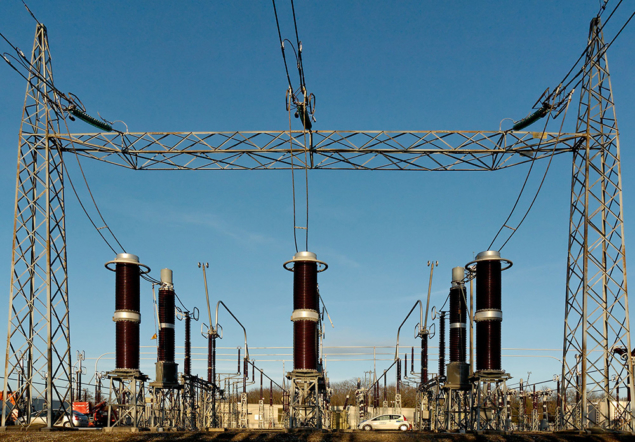Major savings in the energy consumption and cost of accelerators are there for the taking, with potential impact beyond particle physics.

A household freezer consumes about 1 kWh of electrical energy per day. An average household in Western Europe uses about 6 MWh per year. CERN’s total daily electricity consumption on average is about 3.5 GWh, about half of which is needed for the LHC. For reference, the total daily energy consumption of humankind is about 440 TWh – some three quarters of which is currently produced from a finite source of fossil fuels that is driving global temperature rises.
Speaking on the second day of the update of the European Strategy for Particle Physics, which is taking place this week in Granada, Erk Jensen of CERN used these striking figures to illustrate the importance of energy efficiency in high-energy physics. In some proposals for post-LHC colliders, the energy consumed by radio-frequency (RF) and cryogenics systems is in the region of gigawatt hours per day, he said. This puts accelerators into the range where they become relevant for society and public discussion.
The production of renewable energy is enjoying huge growth. Recently, the SESAME lightsource in Jordan became the first major accelerator facility to be powered entirely by renewable energy (solar). For larger research infrastructures, in the absence of better energy-storage technologies, this approach is not yet realistic. The only alternative is to make facilities much more energy efficient. “This is our duty to society, but also a necessity for acceptance!” stated Jensen. The large scale of projects in high-energy physics allows dedicated R&D into more efficient technologies and practices to take place. Not only would this bring significant cost savings, explained Jensen, but concepts and designs developed to improve energy efficiency in accelerators will be relevant for society at large.
A new energy-management panel established at CERN in 2015 has already led to actions that significantly reduce energy consumption in specific areas. These include 5 GWh/y from free cooling and air-flow optimisation, 20 GWh/y from better optimised LHC cryogenics, and 40 GWh/y from the implantation of SPS magnetic cycles and stand-by modes. Recovering waste heat is another line of attack. A project at CERN that is now in its final phase will see thermal energy from LHC Point 8 (where the LHCb experiment is located) to a heating network in the nearby town of Ferney-Voltaire.
For a collider that requires an RF power of 105 MW, such as the proposed electron–positron Future Circular Collider, a 10% increase (from 70 to 80%) in the efficiency of technologies such as high-efficiency klystrons could reduce energy consumption by around 1 TWh in a period of 10 years. This corresponds to a saving of tens of millions of Swiss francs. The adoption of novel neon–helium refrigeration cycles to cool the magnets of a future hadron collider could save up to 3 TWh in 10 years, offering even greater cost reductions. Such savings could, for example, go into R&D for more performant power converters, better designed magnets and RF cavities, and other technologies. Novel accelerator schemes such as energy recovery linacs are another way in which the field can reduce the energy consumption and thus cost of its machines. “Energy efficiency is not an option, it is a must!” concluded Jensen. “A few million investment, to my mind, is well worth it.”
Sustainable future
Energy efficiency is one of several important factors in making high-energy physics more sustainable in the long term. In one of the 160 written inputs to the ESPP Veronique Boisvert of Royal Holloway, University of London, and colleagues made three recommendations to ensure a more sustainable future in view of climate change.
The first is that European laboratories and funding agencies should include, as part of their grant-giving process, criteria evaluating the energy efficiency and carbon footprint of particle physics proposals. The second is that designs for major experiments and their associated buildings should consider plans for reduction of energy consumption, increased energy efficiency, energy recovery and carbon offset mechanisms. The third is that European laboratories should invest in the development and affordable deployment of next-generation digital meeting spaces such as virtual-reality tools, to minimise travel.
“Following the Paris agreement, it will be imperative to have a climate-neutral Europe by 2050,” says Boisvert. “It is therefore vital that big-science initiatives lead the way in greening their technologies and facilities.”





